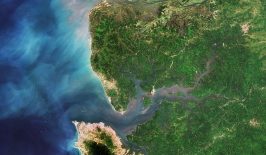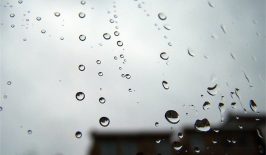The recent dropping in prices of photovoltaic solar panels has led some in the industry to proclaim a new ‘solar boom’, with affordable solar energy now becoming available to a wider customer base. A solar boom is certainly underway in some parts of the world – especially China – but how many solar panels are there in the United States of America?
A Stanford University research project set out to find out, and developed a new artificial intelligence software to do the counting for them. Their A.I., named DeepSolar, is able to identify and catalogue solar panels from satellite images, compiling the information into easily digestible data chunks that provide an overview of solar power in the 48 states of the contiguous United States.
The software started by looking at 370,000 satellite images of the United States and learning to identify solar panels by size, colour and texture. It could then provide a statement, with an accuracy of 93 per cent, on whether a particular image did or did not include solar panels. The DeepSolar developers then upped the ante by feeding their A.I over a billion images of the US.
DeepSolar’s results show that are around 1.47 million solar panels in use on the mainland, with California being the most solar panel packed state. Arizona, Nevada, Utah, New Mexico and Colorado also feature highly in the results, however the use of solar panels quickly drops off as you head further east, before making a slight comeback in Florida and the New England states.
However, perhaps more useful to researchers isn’t just locating where solar panels are, but where they are not.
Solar Power to the People?
The researchers found that despite dropping prices and subsidies in some states, solar power is predominantly located in relatively affluent neighbourhoods. Solar panels are much rarer in low and middle class neighbourhoods, even in locations where it would be financially beneficial in the long term to install them – such as sunny states with high electricity rates.
This information could help policy makers and solar panel manufacturers more efficiently carry out and monitor their work, and electricity companies better regulate their prices. For example, are low income households avoiding solar power because the start-up costs are still too high, despite price drops? Are they perhaps unaware they could save money in the long run?
Other data does show that the financial viability of solar panel varies greatly from state to state, and depends largely on which subsidies, rebates and exemptions are in place. For example, in relatively wet and windy Massachusetts, solar panel owners can expect to make back their installation costs within six years, however in Alabama – a sunny and more southern state – it could take up to 16 years. The primary difference between the two are the policies in place regarding solar energy.
Armed with the DeepSolar information, local governments and businesses can better pinpoint their advertising and public information campaigns in the areas that stand to benefit the most, but which are currently underserved. Solar advocates can also better direct their efforts in bringing local state legislation in lacking states up to the same standard as others.
However, it should also be stated the DeepSolar results are not perfect. Firstly, the researchers omitted images of purely rural areas under the assumption solar panels are unlikely to be present there, and even if they were, they might not be connected to the wider grid. The researchers estimate this decision may have overlooked up to five per cent of solar panels.
Despite this, DeepSolar’s developers now hope to cover these areas in additional sweeps.






